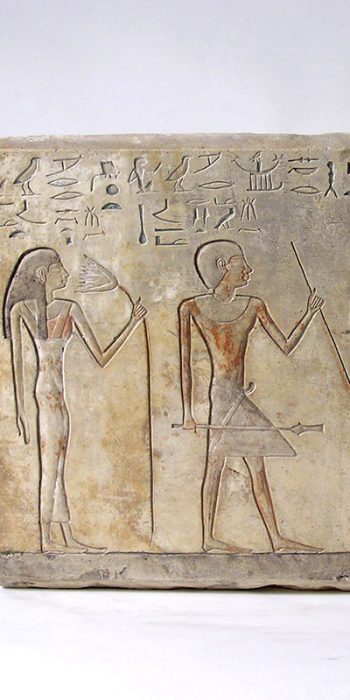Introduction to the Egyptian Collection
The Egyptian Collection of the National Archaeological Museum holds a prominent position worldwide due to the richness, the quality and the rarity of its artefacts.
The core of the Collection consists of the significant donations by two Greek expatriates from Egypt and art lovers, Ioannis Dimitriou and Alexandros Rostovich, that were bequeathed to the National Archaeological Museum in 1880 and 1904 respectively.
The Collection was further enriched with donations by the Greek Archaeological Society in 1894, the government of Egypt in 1893 as well as smaller individual donations and objects retrieved in excavations in Greece.
THE EGYPTIAN CIVILIZATION
In Egypt, along the fertile valley of the Nile, thrived one of the most significant civilizations of the Eastern Mediterranean. The Nile River flows through Egypt northwards, which Herodotus described as “a gift of the river” forming a fertile narrow valley surrounded by the desert and also the wide and fecund Nile Delta shortly before its estuary, where the river is discharged into the Mediterranean.
The Egyptian priest and historian Manetho was the author of the work Aegyptiaca, dated to around 280 BC, in which he recounted the history of Egypt and referred to historical events and the cultural development in connection with the 30 royal families (Dynasties). This conventional dating system was adopted by the modern historians who classified into broader time frames the dynasties, the Kingdoms (Ancient, Middle, New) and the Late Period, including the Graeco-Roman Period. Three Intermediate Periods were interposed during which anarchy, civil strife and general political instability prevailed.
MAIN PRINCIPLES OF THE EGYPTIAN ART
The theocratic and polytheistic character of the Egyptian civilization and the belief in the afterlife defined art which was always determined by the Pharaoh and pertained to the world of the gods and the deceased.
Centered on functionality as its primary purpose, art did not aim at the reproduction of reality, but its replacement and perpetuation. Artists depicted the figures as idealized symbols.
In Egypt art served as the realm in which the world of the gods and the deceased is eternally united, in a magical manner and aided by various rituals, with the world of the living. The statues of the gods gave prominence to their divine nature, whereas those of the Pharaohs denoted their unlimited power over the land of the deceased in order to secure for themselves eternal life through perfect ageless bodies, where the Ka always resides (the soul, vigour).









